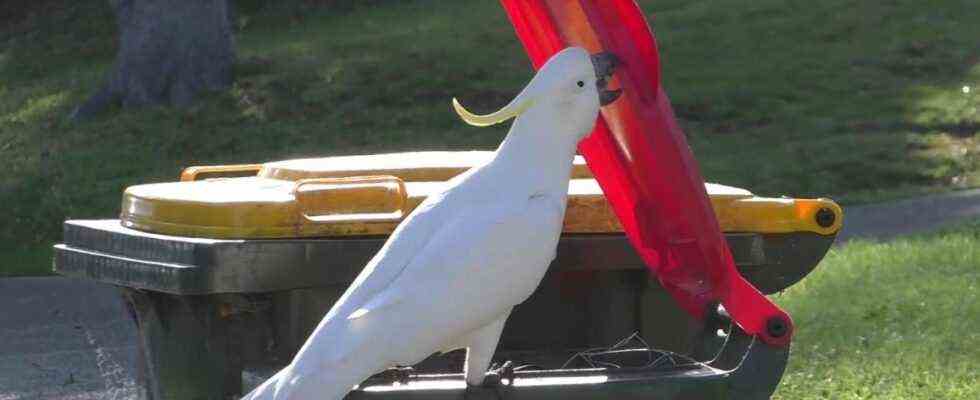What kind of treasures can not be found in garbage cans. At least for yellow-crested cockatoos in the suburbs of Sydney, the tons contain such delicacies that the parrots have even developed a special technique to access the contents. And once a bird has understood the opening method, it doesn’t keep it to itself. Rather, other cockatoos watch the technique and apply it in turn. In this way, within two years, the Sydney suburbs have become more and more habitual of parrots opening and robbing trash cans. This is what biologists working with Barbara Klump and Lucy Aplin from the Max Planck Institute for Animal Behavior in Radolfzell describe together with Australian colleagues in the trade magazine Science.
It all started with a video that showed co-author Richard Major Aplin. A yellow-crested cockatoo was seen lifting the lid of a garbage can with its beak and foot and tripping along the top of the rim of the garbage can until it can drop the lid backwards. Then the feast follows. To find out how widespread this behavior is among birds, the scientists called on the Internet to report cockatoos fiddling around in garbage cans. The birds are widespread around Sydney; have got used to life in close proximity to people.
According to the survey, parrots only mastered this particular technique in three suburbs at the beginning. But two years later, cockatoos were already operating garbage can openers in 44 suburbs. As the temporal and spatial analysis showed, the ability initially spread from the few original locations to directly adjacent suburbs and thus continuously drew wider circles.
Subcultures of rubbish bin looting
The researchers interpret this as evidence of social learning and the development of a new culture among the yellow-crested cockatoos. So the birds have copied the technology from each other and in this way spread it quickly and widely. Adopting a new behavior from conspecifics is especially easy for socially living animals that have developed over many years and are generally capable of learning. Yellow-crested cockatoos meet all of these criteria.
According to the study, however, they did not always copy the behavior of their conspecifics exactly, but maintained individual styles in detail, for example in the way they lifted the lid. In addition, the biologists discovered something like subcultures in individual suburbs – subtle differences in technology that established themselves in the individual areas over time.
It is not uncommon for animals to learn to find new sources of food, including those derived from humans. The passing on of such skills to conspecifics is also common. A famous example are those tits in parts of England who learned decades ago to open the lids of milk bottles that are on the doorstep. But to take on a large garbage can, you need a lot of strength as well as skill. That may be the reason why, apart from cockatoos, only New Zealand keas – also a species of parrot – have so far been observed tampering with garbage can lids. In contrast to the cockatoos, however, the New Zealand birds often remained unsuccessful.
In the suburbs of Sydney, it was mostly strong, male parrots that successfully tried their hand at the garbage cans. Once the lids were opened, other conspecifics came and helped themselves. The less adaptive or weaker parrots also benefited from the innovative spirit of their fellows.

